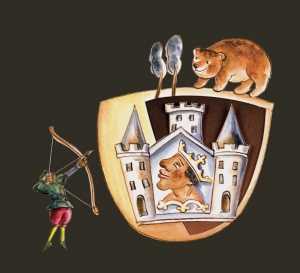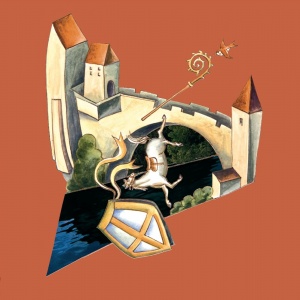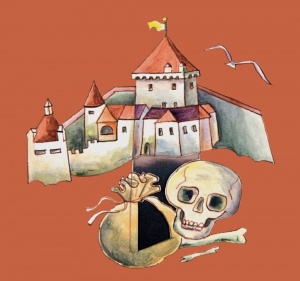The Bishops of Freising - Between Myth and History
Bishop Abraham of Freising was granted extensive lands in Carniola by Otto II, Holy Roman Emperor, in the second half of the tenth century. These lands gradually came to form the Loka lordship. Škofja Loka was a newly created settlement in the shelter of three castles at the confluence of the Selška Sora and Poljanska Sora rivers. The town, whose origins date back to the twelfth century, developed into a rich centre of commerce and trades. Since the founding of the Diocese of Freising in the eighth century and its founder St. Corbinian, to Bishop Joseph Conrad, who was driven to his grave by the news of the nationalisation of the lordship in 1803, 61 bishops held the episcopal see of Freising. Those who had more contact with Škofja Loka or were otherwise connected to the town included the following:
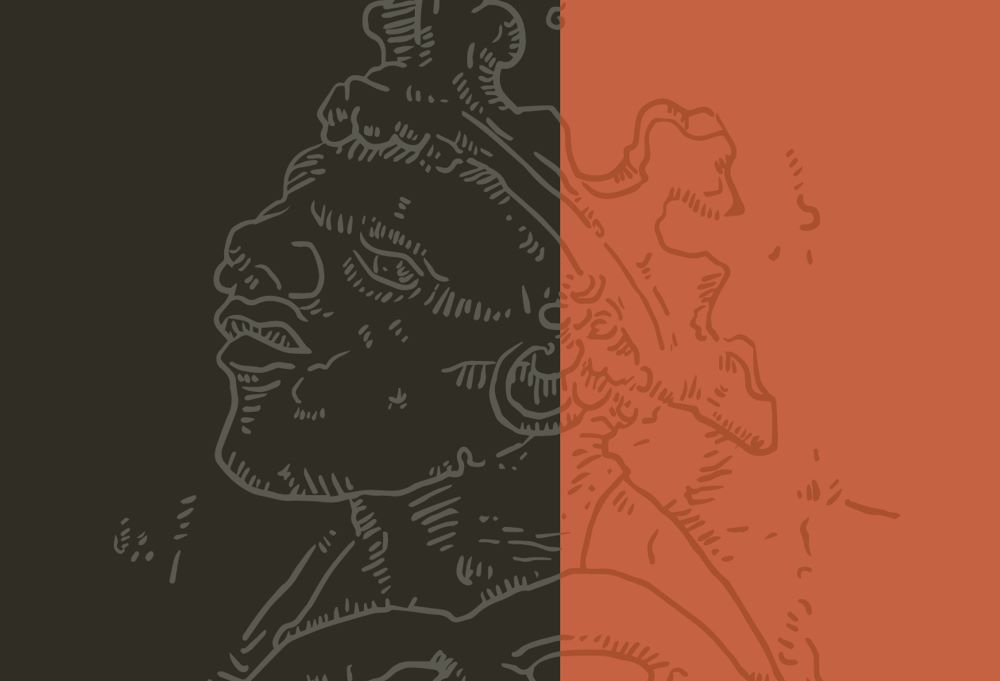
Interpretive Drawing of Bishop Abraham.
Author: Gorazd Koščak
Bishop Abraham is considered the founder of the Loka lordship. According to legend, he spent so much time in Škofja Loka that he even learnt to speak Slovene. This was also the period in which the Loka coat of arms was created.
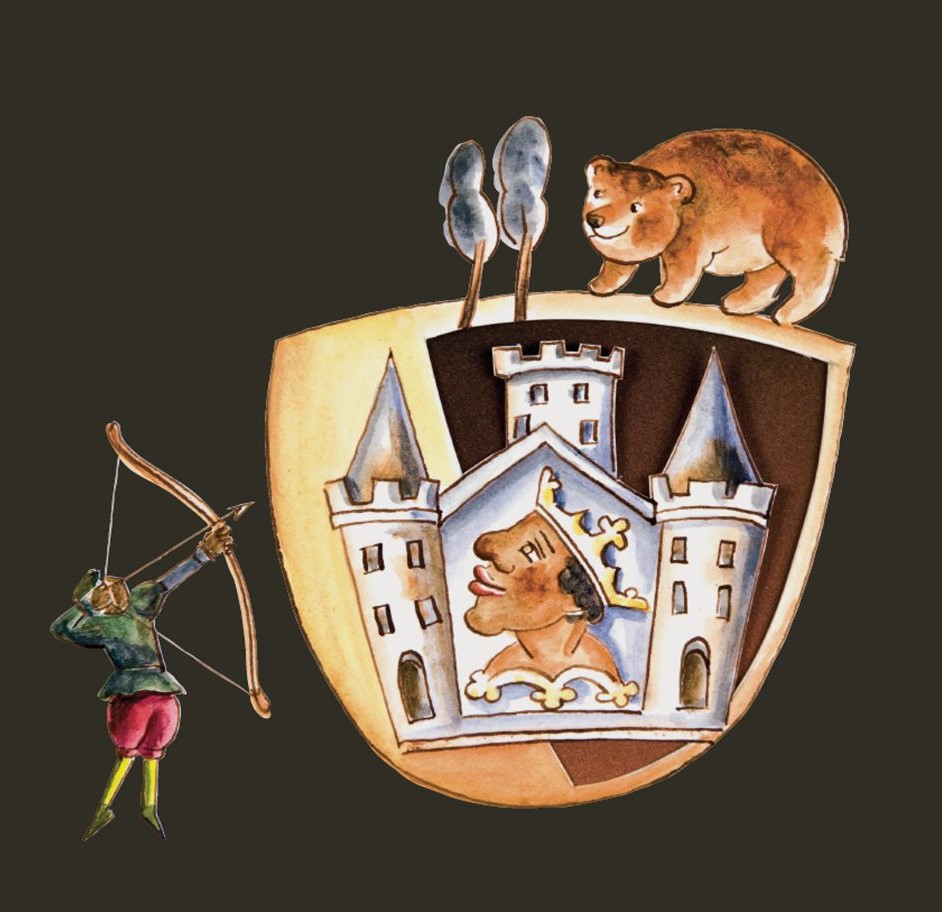
Abraham’s black servant, who shot a bear and thus saved his master’s life, was given a place on Loka’s coat of arms.
Illustration: Maja Šubic
It was during a visit to Škofja Loka that Bishop Leopold fell from the Stone Bridge into the Selška Sora together with his horse and was drowned. He was laid to rest in the Church of the Poor Clares convent.
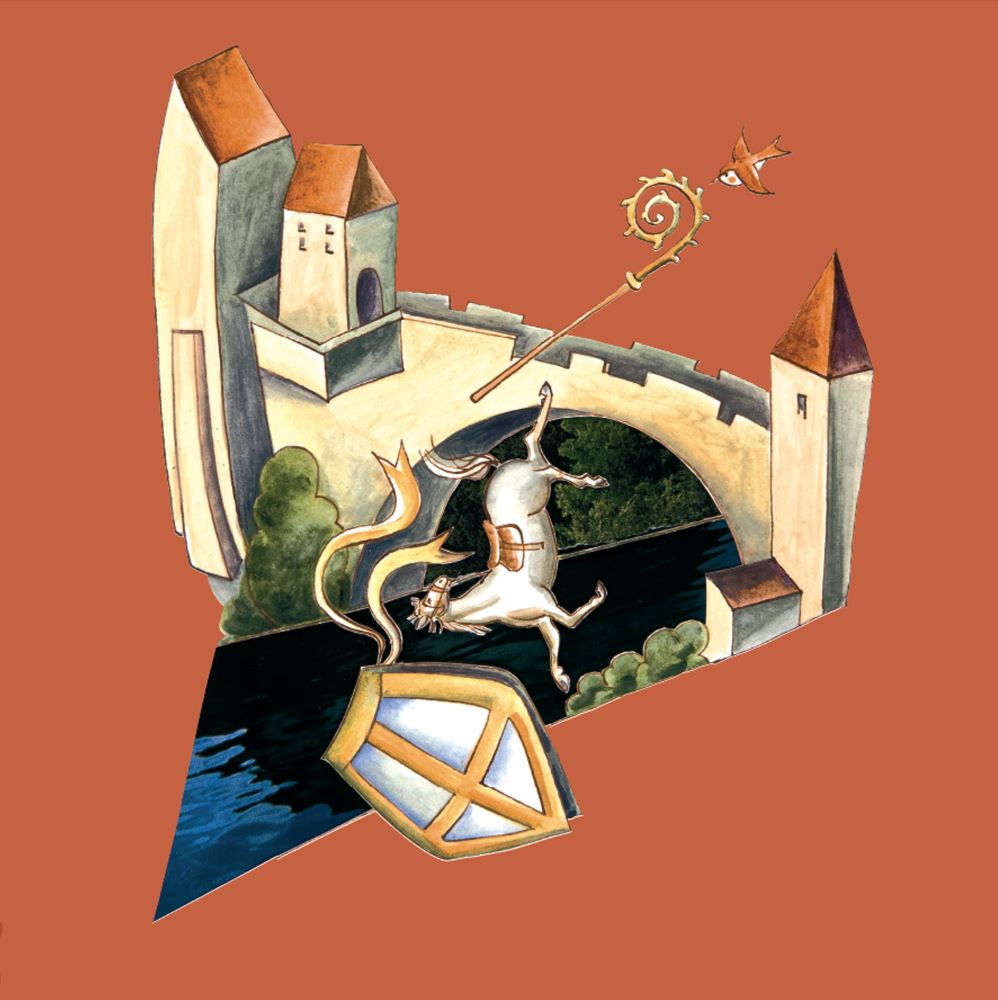
Bishop Leopold’s death was the result of a fall from Škofja Loka’s Stone Bridge.
Illustration: Maja Šubic
Škofja Loka also proved fatal to Bishop Conrad V, who was stabbed by a greedy servant during a visit to Loka Castle. He was initially buried in the castle garden but later moved to the parish church in Old Loka.
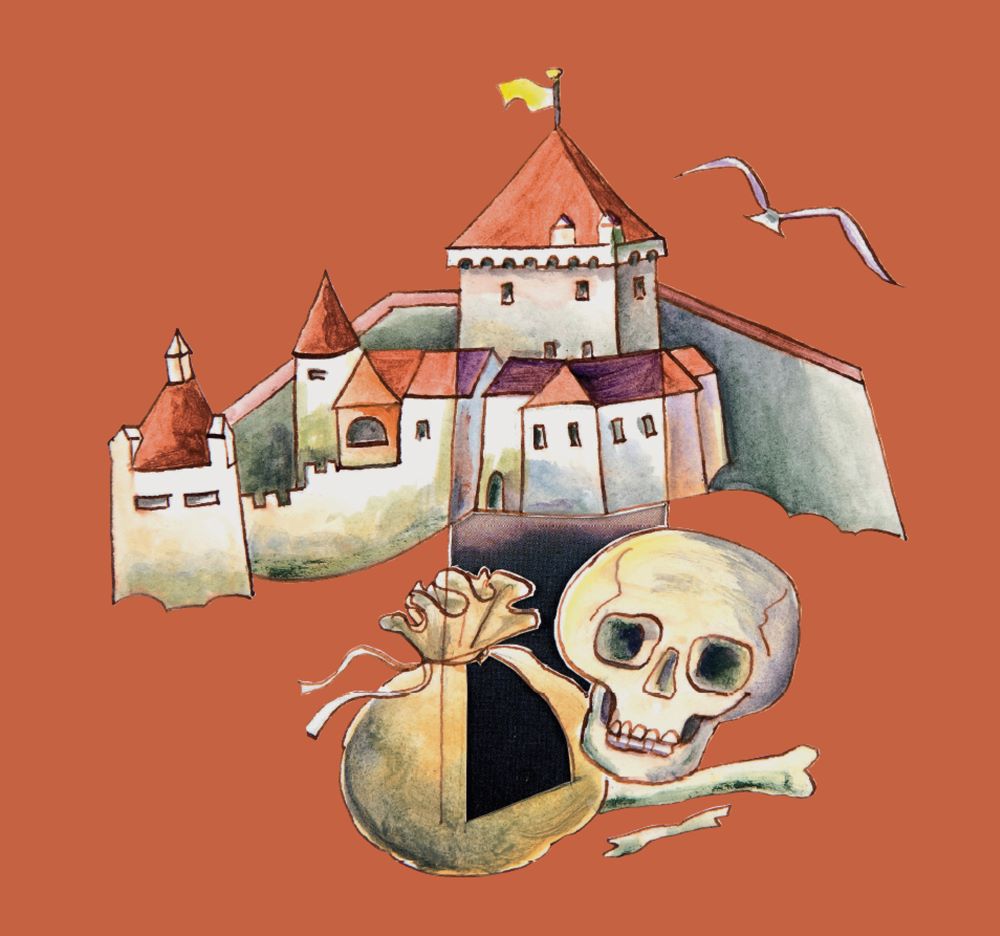
Bishop Conrad V was initially believed to have committed suicide and was therefore buried in the castle garden.
Illustration: Maja Šubic
Following his murder, the episcopal see of Freising was occupied by Herman, the illegitimate son of Count Herman II of Celje. During his reign the Loka lordship passed into the ownership of the counts of Celje for a period of four years, since Herman had borrowed enormous sums of money from his father.
Bishop Philip from the House of the Counts Palatine of the Rhine was a patron of arts and a supporter of culture, who contributed to the reconstruction of Škofja Loka following the devastating earthquake of 1511
In 1698, during his visit to Škofja Loka, the townspeople organized a reception of mythical proportions for Bishop John Francis, an event that was talked about for years. The bishop also ensured a thorough renovation of Loka Castle.
In 1803, Loka dominion was nationalized, marking the end of the 830-year rule of the Freising bishops. That same year, the last bishop, Joseph Conrad, who still owned the dominion, passed away.
Jože Štukl
Škofja Loka
Image Gallery and Catalogue of Museum Objects
